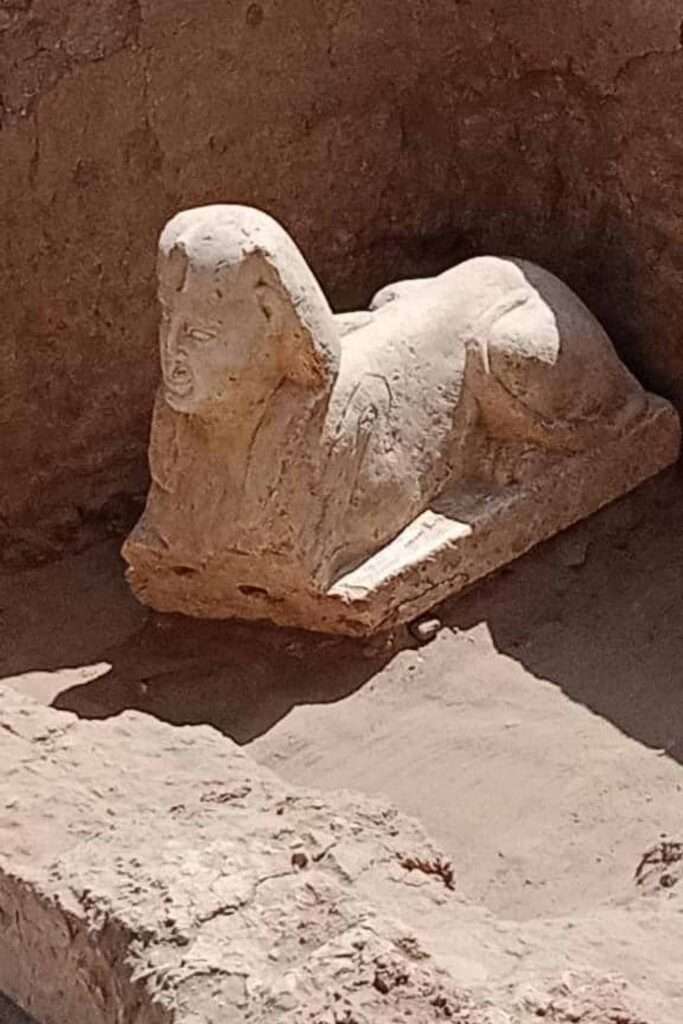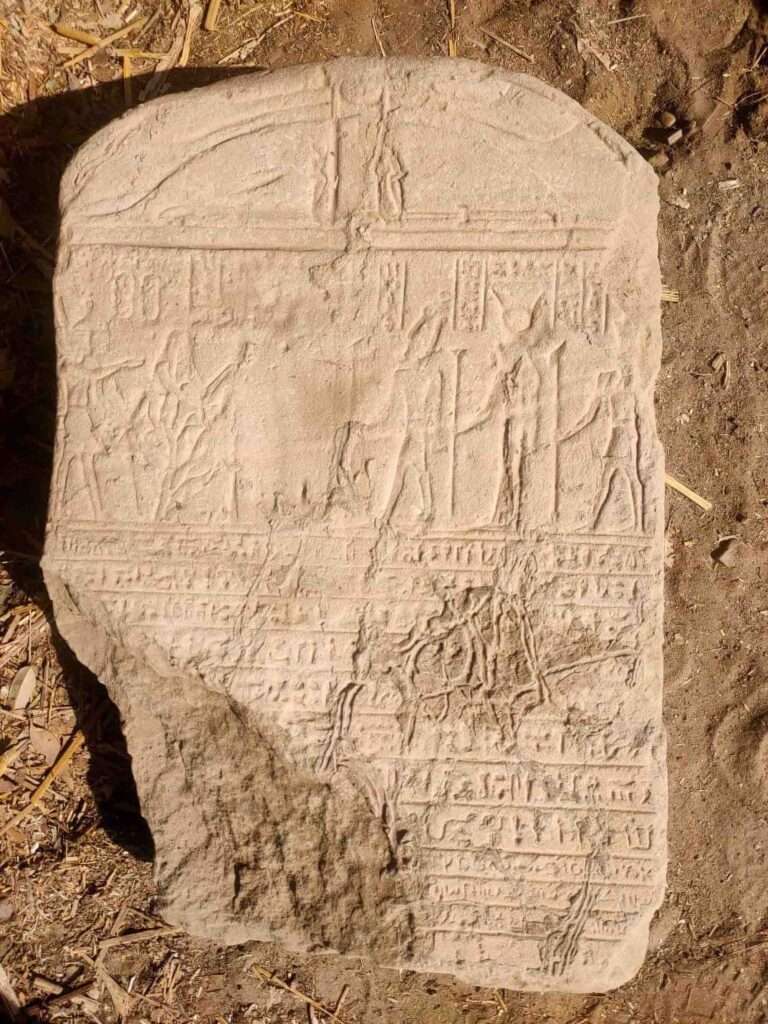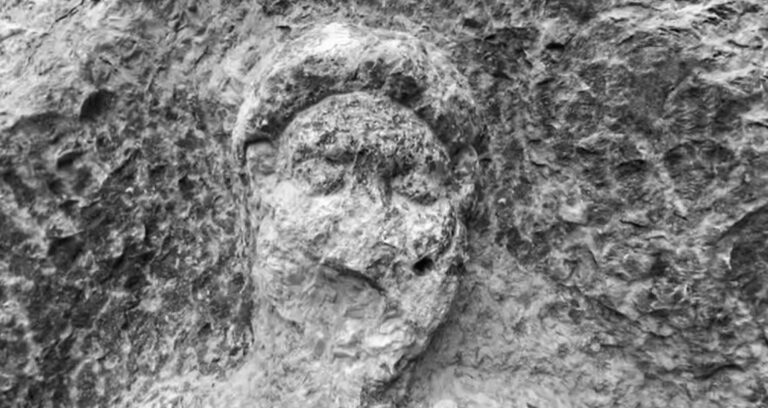Archaeologists in Egypt have unearthed a Sphinx-like statue dating back to the Roman era 2,000 years ago.
The stunning find was made near the Dendera Temple complex in southern Egypt’s Qena Governorate.
Experts say the limestone statue was made in the likeness of Emperor Claudius, who ruled Rome from 41 to 54 AD, expanding it into parts of Africa.

Images, seen here, show it wearing the traditional royal nemes headdress, with the uraeus (cobra) at the front.
Nemes were pieces of striped head cloth worn by pharaohs in ancient Egypt.
The sphinx-like statue was found during the unearthing of a mud-brick basin dating to the Byzantine era.
The basin was found amid the remains of a Roman-era limestone shrine.
An image shows how the statue is much smaller than the Great Sphinx of Giza, which measures 240 by 66 by 62 feet.

The dig was carried out by an archaeological mission from Ain Shams University in Cairo headed by former Antiquities Minister Mamdouh Eldamaty.
Egypt’s Ministry of Tourism and Antiquities said in a statement obtained by Newsflash: “Dr Mamdouh Eldamaty described the statue as beautifully striking, with royal features depicted accurately, showing a slight smile on his lips, which have two dimples on their ends.
“The remains of yellow and red colours also appear on his face, and a Roman-era painting written in hieroglyphics and demotic was found under the statue.”
The archaeological mission’s work is ongoing.

To find out more about the author, editor or agency that supplied this story – please click below.
Story By: William McGee, Sub-Editor: Marija Stojkoska, Agency: Newsflash
The Ananova page is created by and dedicated to professional, independent freelance journalists. It is a place for us to showcase our work. When our news is sold to our media partners, we will include the link here.




